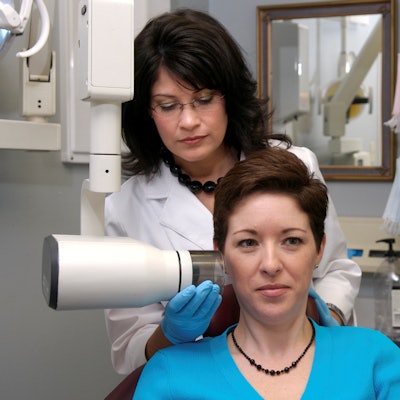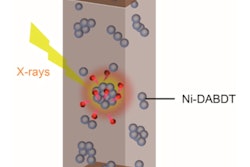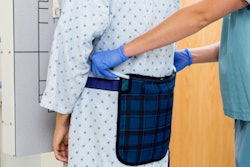
Exposure to radiation from dental x-rays caused an estimated 967 cancers in the U.S. in 2019, according to a recent study. Of these cancers, the vast majority could have been prevented, the researchers found.
Dental radiography-related cancers represent about 3% of new cancers in the oral cavity/pharynx and 5% of brain tumors. However, as many of 75% of these cancers might be preventable through appropriate selection criteria and rectangular collimators, noted co-authors Dr. Douglas Benn, PhD, from Creighton University and Dr. Peter Vig, PhD, from Ohio State University (Oral Surgery, Oral Medicine, Oral Pathology and Oral Radiology, January 30, 2021).
Benn and Vig conducted the study to evaluate and publicize information about the risks associated with x-rays. They thought the subject needed review in light of rising conebeam CT use in dental offices. Furthermore, dental x-rays are the most commonly performed radiographs on healthy people, and children are especially sensitive to the effects of radiation exposure.
Most cancers arising from dental office visits were associated with full-mouth and conebeam CT imaging, the authors reported. Further analysis of 150 dental websites showed that 86% of the general dental offices and 96% of pediatric dental offices provided no useful information on dose risk.
The website analysis shows that "dentists believe that the risks of cancer from dental radiography are trivial," Benn and Vig wrote.
Some of the cancer risk could be prevented by using selection criteria to ensure radiographs are needed and appropriate, the authors noted. The use of rectangular collimators could further reduce dental radiation-related cancer risks.
Collimators include an x-ray sensor holder with a built-in aiming ring to help position an x-ray machine more precisely. Clinicians can buy a sterilizable reusable holder with aiming rings for about $150, according to Benn.
Collimation of the x-ray beam can result in radiation dose reduction of up to 80%, but the tool is underused, the authors observed. In one survey cited in the study, only 0.6% of dental offices used rectangular collimation in 2014-2015.
Some dentists believe that using a rectangular collimator increases the number of technical errors, resulting in more x-rays and radiation exposure. Benn explained that the repeat x-ray rate with collimation is about 7%, but there is also a 73% reduction in the overall dose.
Benn and Vig also advised that dental professionals use an informed consent form that provides a detailed list of cancer risks and an explanation of why the imaging study is clinically needed. The lack of such a form on the vast majority of dental sites shows the dental community "demonstrates their belief of lack of legal risk to themselves," the authors wrote.



















